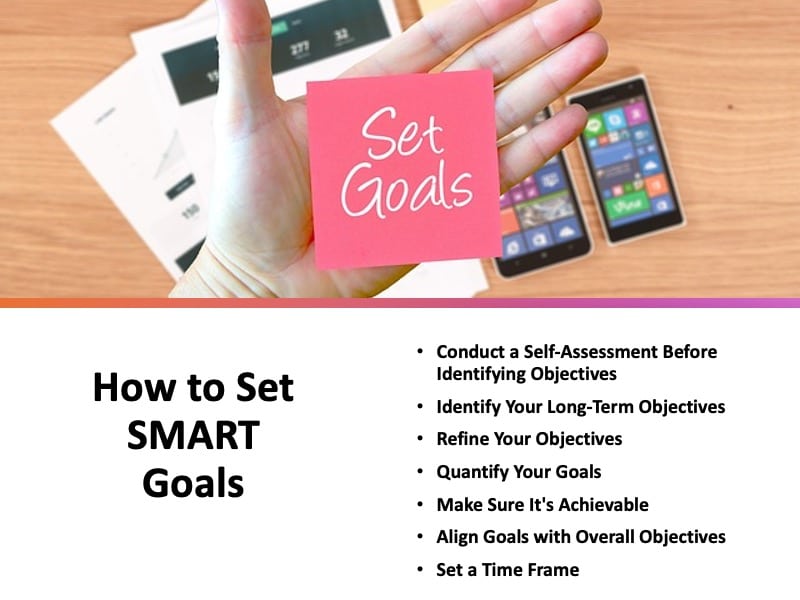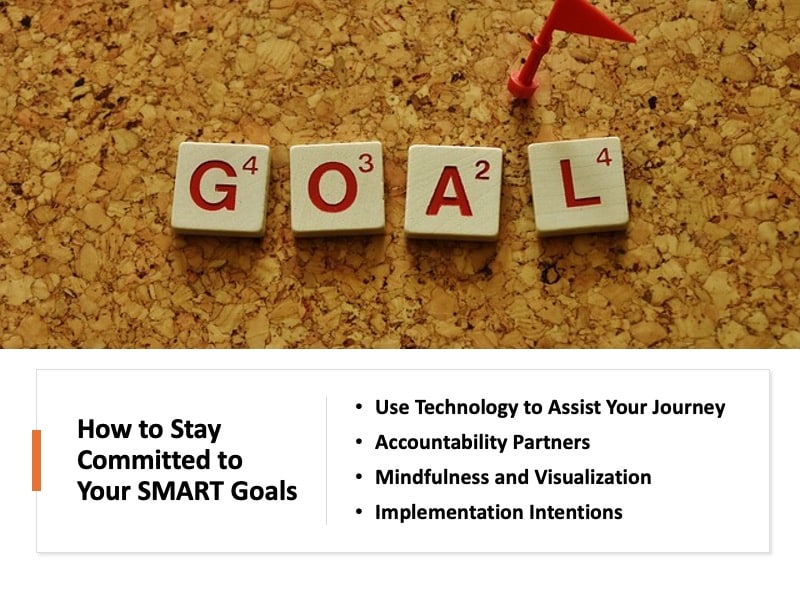What are SMART Goals & How Can SMART Goals Help You?
Goal setting is one of the key factors that separates mediocre results from outstanding success.
As a professional athlete, I have relied on SMART goals as the foundation of my success—both in my personal development and in my career.
I use this structured approach not only for myself but also with my teams and even in my family life.
SMART goals provide clarity, keeping my mind organized and focused while allowing me the freedom to take action with confidence.
When I create. SMART goal- I know there is a clear plan and a defined objective, and I can move forward without hesitation.
One of the greatest advantages of SMART goals is their flexibility.
I create weekly, monthly, and yearly SMART goalsto stay on track, and I also apply this framework to specific meetings or discussions so that everyone I work with is on the same page.
This approach makes planning simple, effective, and motivating, ensuring that every step taken is a step closer to success.
If you want to take control of your progress and stay motivated every step of the way, SMART goals can be your ultimate game-changer.
Keep reading to learn exactly how to use this powerful framework to achieve your dream body, get healthier, maximize your potential, and create lasting success in any area of your life!
What Are SMART Goals?

SMART goals provide a structured and proven method for setting clear, actionable objectives that keep you focused, motivated, and on track for success.
SMART is an acronym that stands for Specific, Measurable, Achievable, Relevant, and Time-bound.
This goal-setting framework provides an organized approach to help individuals set clear, definable objectives and is used by athletes, business leaders, and many others worldwide (Doran, 1981).
- Specific: Clear, well-defined goals that are easy to understand.
- Measurable: A way to track your progress with quantifiable benchmarks.
- Achievable: A realistic objective that takes your current situation into account.
- Relevant: The goal aligns with your overall objectives and needs.
- Time-bound: A deadline to achieve the goal, which creates a sense of urgency.
Why Are SMART Goals Effective?
SMART goals tap into psychological and behavioral constructs that promote success.
They provide structure and direction, increasing motivation and commitment (Locke & Latham, 2002).
Specificity helps you to focus your efforts, measurability allows for tracking and adjustment, and having achievable and relevant goals ensures that your efforts are neither too lax nor overwhelming.
The time-bound nature creates a sense of urgency, further driving your efforts toward achievement.
Together, these elements build a strong foundation for sustained effort and successful outcomes.
How to Set SMART Goals that Actually Work

Although it might sound intuitive to some people, setting your SMART goals should take time and effort because crafting a perfect SMART goal will be significantly more effective than a “good” one.
Here are some tips that will help you craft your first SMART goal:
Conduct a Self-Assessment Before Identifying Objectives
Before zeroing in on your long-term objectives, conducting a self-assessment is beneficial.
This could involve tracking your current fitness level, diet habits, and other health-related metrics.
Your baseline data will not only guide the specificity of your SMART goals but also make them more personalized and, consequently, more achievable.
Identify Your Long-Term Objectives
Before setting a specific SMART goal, it’s crucial to identify your long-term objectives.
Are you looking to shed some pounds, improve athletic performance, or perhaps gain muscle mass?
Your overarching goal will determine your specific SMART goals.
Refine Your Objectives: Get into the Specifics
The power of SMART goals lies in their specificity.
Instead of settling for a vague aspiration like “I want to lose weight,” separate this desire into quantifiable metrics.
For example, say, “I aim to lose 10 pounds and reduce my body fat by 2% in the next 3 months by combining cardiovascular exercise with strength training and a balanced diet.”
This level of detail serves as a tangible roadmap for your journey.
Quantify Your Goals
Next, your goals need to be measurable.
For weight loss, the measurement is relatively straightforward: pounds lost, or body mass index (BMI) reduced.
But for something like athletic performance, measurements might include race times or weightlifting amounts.
Remember, your goals’ “measurable” aspect will vary based on what you’re trying to achieve.
While weight loss can be measured in pounds or body mass index (BMI), athletic performance might focus on time shaved off a sprint or the percentage of free throws made in basketball.
If your goal pertains to mental well-being, consider using a validated questionnaire like the Generalized Anxiety Disorder 7-item (GAD-7) scale.
Measurements need to be relevant to your specific objective to provide actionable feedback.
Make Sure It’s Achievable
Aiming high is admirable, but impractical goals can lead to demotivation.
Cross-reference your objectives with your self-assessment and consider constraints such as time, work commitments, or physical limitations.
For instance, if you have never run more than a mile, aiming to complete a marathon in a month is unrealistic.
Your goals should be challenging but within the realm of possibility.
Align Goals with Overall Objectives
Your SMART goals shouldn’t just be achievable and time-bound; they should resonate with your overall objectives and even your life values.
For a professional athlete, a goal related to a specific skill development may have a higher relevance not only in achieving athletic performance but also in building a fulfilling career.
Set a Time Frame
Every SMART goal needs a deadline.
Having a timeframe isn’t just about instilling urgency; it also acts as a lifeline to recalibrate your strategies if you fall behind.
Ensure your deadline is neither too lenient nor too stringent but offers a balanced window that serves as a challenge and a feasible target.
Strategies for Maintaining Commitment to Your SMART Goals

Once you’ve set your SMART goals, the next challenge is to stay committed.
Commitment is not just a one-time decision but a continuous process.
Here are some proven methods to maintain your focus and dedication:
Technology to Your Rescue
There are numerous apps available that can track your health metrics, workout progress, or nutrition intake.
Apps like MyFitnessPal for diet and Strava for exercise can serve as excellent companions on your journey to health and fitness, providing measurable data that you can cross-reference with your goals.
Accountability Partners
Studies show that having an accountability partner can significantly boost your success in meeting your goals (Lally & Gardner, 2013).
Whether it’s a gym buddy or a family member invested in your success, sharing your SMART goals can offer an extra layer of commitment.
Mindfulness and Visualization
Psychological strategies such as mindfulness and visualization can also be effective.
Mindfulness can help you become more aware of your actions and choices, making it easier to stick to your plan.
Visualization techniques involve imagining accomplishing your goals, which can serve as a mental motivator (Taylor et al., 1998).
Implementation Intentions: A Psychological Lever for Success
One of the reasons why people often fail to achieve their SMART goals is the gap between intention and action.
Here is where “implementation intentions” can play a pivotal role.
An implementation intention is a self-regulatory strategy that helps translate your goals into action.
It usually takes the form of an “if-then” plan:
“If situation X arises, then I will perform response Y” (Gollwitzer, 1999).
Creating Your If-Then Plans
To create an effective implementation intention, identify the challenges or obstacles that may hinder your progress toward your SMART goals.
For example, if your goal is to exercise more, a challenge could be the temptation to skip the gym after a tiring workday.
Your “if-then” plan might be: “If I feel tired after work, then I will do a 20-minute home workout instead of skipping exercise.”
The Power of Automaticity
The beauty of implementation intentions is that they help automate your responses.
By pre-deciding what to do in challenging situations, you reduce the mental effort required to make decisions, making it more likely you’ll stick to your goals (Webb & Sheeran, 2008).
Consistency and Adaptation
Consistency is key when employing implementation intentions.
Keep your “if-then” plans straightforward and actionable.
However, be willing to adapt these plans as you learn more about what works for you and as your situation changes.
By incorporating implementation intentions into your SMART goals framework, you further bridge the gap between intention and action, making it more likely that you’ll achieve the health and fitness results you desire.
Assessing and Adjusting Goals
A SMART goal is not set in stone.
The Time-bound aspect serves as a checkpoint, not an endpoint.
It’s essential to assess your progress as you go, especially when you reach your initially set timeframe.
Review and Reflect
At the end of your timeframe, take a step back to review what you’ve accomplished.
Have you met, exceeded, or fallen short of your goal?
Use this reflection period to adjust your strategies or set new SMART goals.
Dealing with Changes
Life is unpredictable, and circumstances can change.
Whether it’s a change in your work schedule, a sudden illness, or newfound knowledge about your health, it’s important to revisit and modify your goals accordingly.
Celebrate and Move Forward
If you’ve achieved your goal, take the time to celebrate.
Rewards, even small ones, can serve as strong motivational tools.
For example, non-food fitness rewards are especially effective because they reinforce a sense of accomplishment without undermining the development of healthy habits, helping individuals strengthen positive behavior patterns and avoid reward cycles that rely on food as a treat.
Then, think about the next steps.
Are there higher mountains to climb or different terrains to explore?
By implementing these strategies for maintaining commitment and assessing and adjusting your goals, you’ll be better equipped to navigate the complexities of health and fitness improvements.
Final Thoughts: How to Use SMART Goals to Achieve Your Dreams!

Reaching your biggest goals—whether in health, fitness, career, or personal growth—isn’t just about effort; it’s about having a clear and effective plan.
By using the SMART goals framework, you transform aspirations into specific, measurable, achievable, relevant, and time-bound objectives that guide your progress.
This structured approach keeps you focused, motivated, and accountable, ensuring that you’re consistently moving forward.
When you incorporate strategies like implementation intentions and periodic assessments, you create a roadmap for long-term success rather than relying on short bursts of motivation.
But remember—goal setting is an ongoing process. Regularly evaluating your progress, refining your approach, and making necessary adjustments keeps you on track and prevents you from feeling stuck.
The beauty of SMART goals is that they apply to every area of life. Whether you’re working toward better health, improving your fitness, advancing in your career, or building stronger relationships, this method provides clarity and direction to help you achieve what matters most.
Each goal you accomplish sets the stage for your next achievement. So start today—set SMART goals that inspire you, challenge you, and move you closer to the life you truly want.
This website does not provide medical advice. This website site does contain affiliate links, and purchases may earn a commission.
Read my Medical Disclaimer, Review Disclaimer, and Publishing Policies for more details. Use of this site indicates acceptance of these terms.



